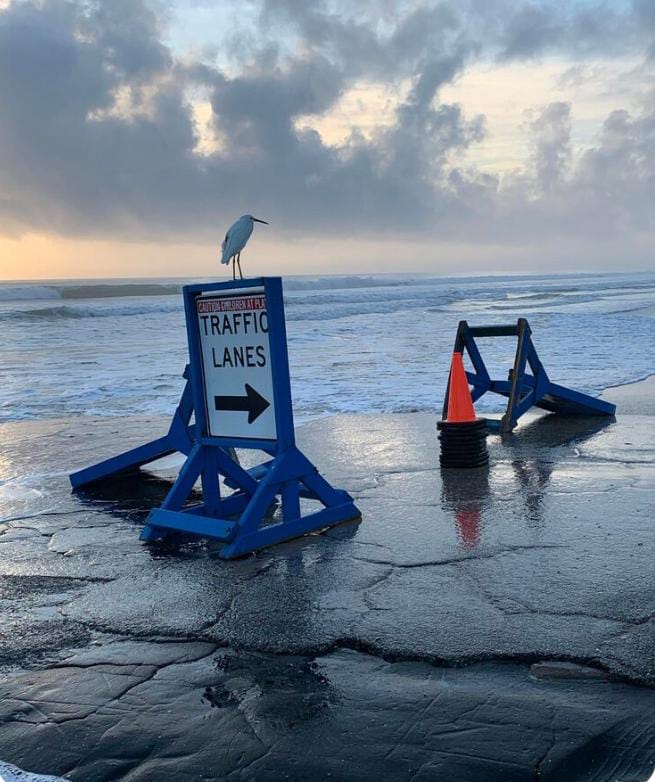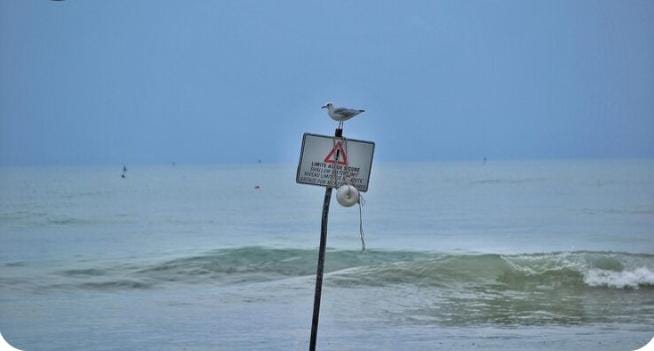Coastal Flood Advisory Issued for Ocean City: What Residents and Visitors Need to Know
On Monday, local weather authorities announced a Coastal Flood Advisory issued for Ocean City, alerting both residents and visitors to the potential for minor to moderate flooding across low-lying areas of this popular Atlantic Coast destination. While advisories like this are not uncommon during certain parts of the year, the timing and specific conditions surrounding this latest alert highlight broader concerns around infrastructure, preparedness, and the challenges of living along the ever-changing seashore.
At first glance, a “flood advisory” may not sound alarming, especially when compared to full-scale warnings issued during hurricanes or tropical storms. However, such alerts should never be dismissed. They serve as crucial reminders of Ocean City’s vulnerability to increasingly frequent high-tide flooding events, storm surges, and rising sea levels that pose risks far beyond today’s minor street inundations.
In this article, we’ll break down what this advisory means, why it matters, what local officials are doing, and how residents and tourists alike can stay safe while enjoying Ocean City’s treasured coastline.
Understanding Coastal Flood Advisories
A Coastal Flood Advisory is typically issued by the National Weather Service (NWS) when coastal water levels are expected to rise high enough to impact vulnerable roadways, low-lying property, and shoreline infrastructure. Unlike a flood warning—reserved for more dangerous or life-threatening conditions—advisories indicate that flooding is likely but not expected to cause widespread destruction.
In practice, that usually means water covering intersections near the bay, saltwater bubbling up through storm drains, or minor tidal inundation in known flood-prone streets. These incidents can still cause headaches for drivers, hinder emergency access, and disrupt normal activity, especially in busy coastal towns like Ocean City where tourism, hospitality, and real estate converge.
For Ocean City specifically, advisories are often tied to:
- Astronomical high tides (common during full and new moons).
- Strong onshore winds, which can push water from the Atlantic into back bays.
- The lingering effects of offshore storms funneling water toward the coast.
- Rising baseline sea levels, which elevate the risks of everyday tidal flooding.
Why Ocean City is Particularly Vulnerable
Ocean City, Maryland, is a barrier island community with a unique blend of beachside attractions, bustling boardwalks, and residential neighborhoods. Its geography, however, makes it extremely vulnerable to tidal surges.
The island sits between the open Atlantic Ocean and the shallow back bays of coastal Maryland. During elevated tides, water can be pushed into the bay and trapped in low-lying streets. Even without a storm, narrow outlets to the ocean mean water has limited escape routes. This makes the town susceptible to “nuisance flooding”—events that occur during high tide cycles and disrupt normal life without being classified as disasters.
Key challenges include:
- Flat terrain: Much of Ocean City sits only a few feet above sea level.
- High development density: Homes, hotels, and businesses are packed into flood-prone areas.
- Infrastructure strain: Older drainage systems were not designed to handle today’s flood frequencies.
- Tourism-driven economy: Road closures and waterlogged boardwalk areas directly affect commerce, especially in peak summer months.
Details of the Current Advisory
The latest Coastal Flood Advisory issued for Ocean City covers both the bayside and oceanfront areas, with officials warning that water may rise onto low-lying roads during high-tide cycles over the next 24 to 36 hours.
Meteorologists note that onshore winds combined with higher-than-normal tides are driving this particular event. While significant damage is not expected, the advisory urges residents to avoid driving through saltwater, secure outdoor property vulnerable to flooding, and monitor local emergency updates.
Affected areas may include:
- Baltimore Avenue and Philadelphia Avenue, where water sometimes covers roadways.
- Residential streets near the bayside, especially on the western edge of the island.
- Boardwalk-adjacent sections, where water can encroach during strong surges.
Officials stress that while flooding should remain minor, it can still pose risks for vehicles, pedestrians, and sensitive infrastructure.
The Human and Economic Impact
Even minor flooding carries consequences. Saltwater intrusion damages vehicles, erodes infrastructure, and accelerates wear on utilities like sewer and stormwater systems. For businesses on the popular boardwalk and coastal boulevards, repeated flooding creates costly disruptions.
Tourism is especially vulnerable. Ocean City welcomes millions of visitors each year, many of whom drive in from neighboring states. Road closures, even temporary ones, can lead to travel delays and affect hotel bookings, restaurant traffic, and recreational outings. Meanwhile, residents living near the waterfront often face property damage, insurance hurdles, and increased stress during repetitive tidal surges.
Preparing for Coastal Flooding
Local officials recommend the following measures whenever a Coastal Flood Advisory is issued:
- Stay Informed: Monitor updates from the National Weather Service and Ocean City Emergency Management.
- Do Not Drive Through Floodwaters: Even a few inches of water can disable cars or conceal dangerous potholes.
- Protect Property: Move valuable items off the ground floor, check sump pumps, and secure outside furniture.
- Plan Ahead: Visitors should allow extra travel time and be prepared for potential detours.
- Respect Road Closures: They are meant to protect both drivers and emergency responders.
By taking these measures, both residents and tourists can minimize risks and adapt to the temporary inconvenience of tidal flooding
events.

Broader Climate Implications
A visit www.ocnj.us/octides One reason the Coastal Flood Advisory issued for Ocean City resonates beyond a single event is the increasing frequency of such advisories nationwide. Climate data show that what used to be relatively rare “nuisance flooding” now occurs multiple times a year in many coastal cities. Rising sea levels, warmer oceans, and changes in storm intensity are reshaping how communities like Ocean City deal with flooding.
The greater Chesapeake Bay region has seen some of the fastest sea-level rise rates on the U.S. East Coast. Combined with land subsidence, this makes towns along Maryland’s coast especially vulnerable to future flooding. For Ocean City, this means local leaders must consider not just temporary advisories, but also long-term strategies such as upgraded stormwater systems, flood-resistant infrastructure, and sustainable urban planning.

Community Resilience and Adaptation
In recent years, Ocean City has taken proactive steps to address its flood risk. Projects have included raising roadways in key flood-prone zones, improving drainage systems, and exploring natural solutions like wetlands restoration to absorb tidal surges.
Additionally, town leaders emphasize the importance of public education. Many advisory alerts are routine, but the goal is fostering a culture of preparedness so that residents respond calmly and proactively rather than being caught off guard.
Community organizations have stepped in to support vulnerable populations, ensuring seniors, renters, and seasonal workers receive information and assistance. These efforts aim to preserve not only physical safety but also the economic lifeblood of a tourism-driven town.
A Reminder of the Coast’s Fragile Balance
For Ocean City, each advisory is a reminder that life on a barrier island requires constant vigilance. The beauty of its beaches and bays comes with the tradeoff of exposure to rising seas and recurrent flooding. While the current Coastal Flood Advisory may not lead to major property damage, it underlines the fragile balance between humans and the natural environment in coastal regions.
As climate and weather patterns continue to shift, advisories like these are likely to become a more routine part of living near the water. The question is no longer whether Ocean City will experience flooding, but how frequently, and how the community adapts to ensure resilience in the decades to come.
Conclusion
The Coastal Flood Advisory issued for Ocean City serves as both a timely precaution for residents and a broader symbol of the challenges facing coastal communities across the country. While the current event is expected to cause only minor disruptions, the underlying patterns—sea-level rise, frequent high-tide flooding, and strained infrastructure—pose significant long-term challenges.
By staying alert, following safety recommendations, and supporting community-wide adaptation efforts, residents and visitors can continue enjoying Ocean City’s vibrant beaches and boardwalk while preparing for a future where advisories may become increasingly common.
In the end, these alerts aren’t just about water on the streets—they’re about awareness, responsibility, and the resilience of communities determined to thrive by the sea

